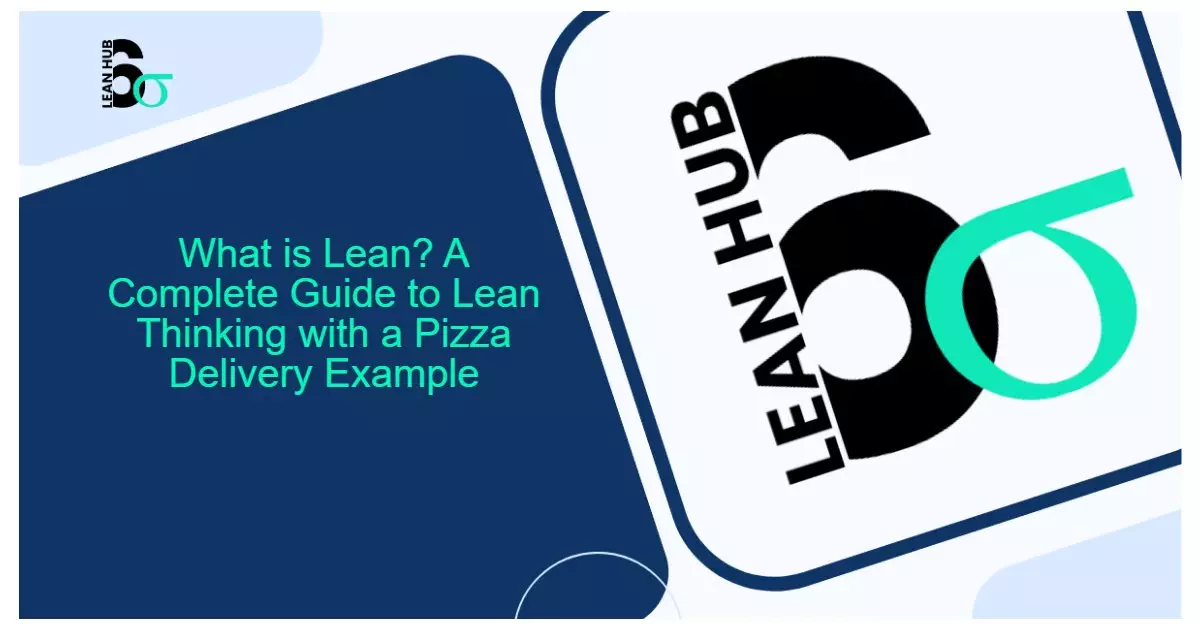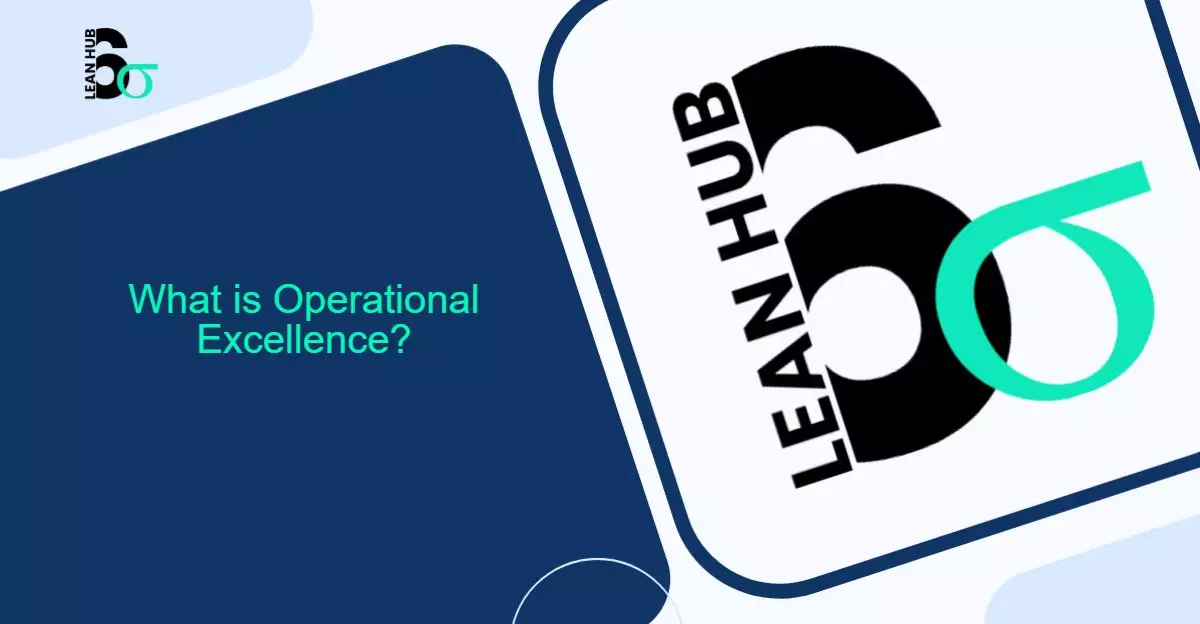What is Lean? A Complete Guide to Lean Thinking with a Pizza Delivery Example
Keywords Targeted: What is Lean, Lean methodology, Lean thinking, Lean principles, Lean in service industry, Lean process improvement, Lean pizza delivery example, waste in Lean, Lean tools, continuous improvement
Introduction: What Is Lean?
Lean is a powerful business improvement approach that helps organizations deliver maximum customer value while minimizing waste. Though Lean originated in manufacturing, its universal principles are now being used in healthcare, software, education—and even pizza delivery.
So, what exactly is Lean? Simply put, Lean is about delivering exactly what the customer wants, when they want it, using the least amount of resources possible.
Imagine a pizza shop that takes 45 minutes to deliver a pizza. Customers are unhappy. The kitchen staff is stressed. Delivery drivers wait around or rush in chaos. Lean thinking helps break down this problem and redesign the process to deliver pizzas hot, fast, and fresh, with minimal delays or waste.
This article explains what Lean is, the principles behind it, common Lean tools, and how it applies to real-life business scenarios like a pizza delivery operation.
The Origin of Lean: A Brief History
Lean has its roots in the Toyota Production System (TPS), designed in the 1940s by pioneers like Taiichi Ohno. Their focus was simple: eliminate everything that doesn’t add value to the customer.
In 1990, the term “Lean” was coined in the book The Machine That Changed the World. Toyota was found to be producing higher-quality cars faster and cheaper than its Western competitors—thanks to its Lean principles.
Today, Lean is used far beyond automotive plants. Even your favorite pizza delivery chain can apply Lean to cut down delivery time, improve quality, and increase customer satisfaction.
Lean Thinking: The Core Philosophy
Lean isn’t just a toolkit—it’s a mindset that transforms how organizations operate. This mindset, called Lean Thinking, is structured around five key principles.
The 5 Lean Principles (with Pizza Delivery Example)
- Define Value
Ask: What does the customer want? In our pizza shop, customers value a hot pizza delivered in under 30 minutes with accurate toppings. - Map the Value Stream
Identify every step in your delivery process—order taking, preparation, baking, packing, routing, delivery—and classify them as value-added or waste. Mapping revealed that pizzas waited 10 minutes after baking before a driver picked them up—non-value-added time. - Create Flow
Eliminate bottlenecks or delays that break the rhythm of delivery. We rearranged the kitchen to reduce walking, cut prep time, and added a pizza warming shelf to improve flow. - Establish Pull
Don’t overproduce. Work based on actual customer orders, not forecasts. Instead of preparing generic pizzas in advance, each order triggers immediate production and dispatch. - Pursue Perfection
Continuous improvement is a habit, not a goal. Weekly team huddles now review delivery times and missed orders to identify improvement ideas.
Types of Waste in Lean (TIMWOOD)
Lean is centered on eliminating waste—activities that consume time or money but don’t add customer value.
The 8 Wastes of Lean in Pizza Delivery:
| Waste Type | Pizza Shop Example |
|---|---|
| Transport | Moving pizzas from kitchen to dispatch unnecessarily |
| Inventory | Storing too many boxes, sauces, or pre-made dough |
| Motion | Staff walking across the kitchen repeatedly to grab ingredients |
| Waiting | Pizza sitting idle after baking, waiting for delivery driver |
| Overproduction | Making pizzas before orders are placed |
| Overprocessing | Adding extra garnishes the customer didn’t request |
| Defects | Wrong toppings, undercooked pizza, or incorrect addresses |
| Underutilized Talent | Not using team members’ suggestions to improve delivery flow |
Eliminating even one of these wastes can shave minutes off delivery time and drastically improve the customer experience.
Common Lean Tools and Techniques
Here’s how Lean tools can be used in a real-world pizza delivery setting.
1. Value Stream Mapping (VSM)
Visually map the full pizza delivery process—from order placement to doorstep delivery—to uncover delays.
The VSM revealed that pizzas were cooling off during a 10-minute queue for drivers. A heating station was added.
2. 5S System
Organize the kitchen and delivery station for speed and efficiency:
- Sort: Remove rarely used utensils
- Set in Order: Place toppings and ingredients by usage frequency
- Shine: Keep prep areas spotless
- Standardize: Create visual labels for stations
- Sustain: Train new staff on 5S checklist
3. Kaizen (Continuous Improvement)
Encourage daily improvements. Even small changes—like reducing phone hold time—can have big impacts.
A suggestion from the phone staff led to the introduction of an “express menu” for faster ordering.
4. Kanban
Use visual boards to track order stages: Ordered → Preparing → Baking → Packed → Dispatched → Delivered
5. Poka-Yoke (Error Proofing)
Design processes to prevent mistakes.
Color-coded pizza boxes helped prevent wrong orders being delivered.
6. 5 Whys – Root Cause Analysis
Use this to find out why pizzas are consistently late:
- Why was the pizza late? – The driver left 10 mins after it was ready
- Why the delay? – He waited for two orders to batch
- Why batch? – To save fuel
- Why save fuel? – Fuel cost targets for drivers
- Why not plan better? – No route sequencing system
Lean in Manufacturing vs. Lean in Services
Lean was born in factories but thrives in services.
| Sector | Lean Application |
|---|---|
| Manufacturing | Assembly line balancing, inventory reduction |
| Pizza Delivery | Faster order prep, shorter driver wait times, improved routing |
| Healthcare | Streamlining patient admission and discharge |
| Banking | Reducing loan processing times |
| IT Services | Faster ticket resolution, agile sprint planning |
In the pizza shop, Lean helps reduce delays, eliminate incorrect orders, improve driver efficiency, and satisfy hungry customers faster.
Benefits of Lean Implementation (for Pizza Shop & Beyond)
- Faster Delivery Times
Cut average delivery from 45 mins to 28 mins. - Higher Customer Satisfaction
Consistent, hot, accurate pizzas increase repeat orders. - Lower Costs
Less waste in ingredients and overtime hours. - Employee Morale
Team members feel involved in solving problems. - Process Clarity
Everyone knows their role and expectations.
Lean vs. Six Sigma: What’s the Difference?
While Lean focuses on waste, Six Sigma targets variation and defects.
| Feature | Lean | Six Sigma |
|---|---|---|
| Focus | Speed and Flow | Precision and Quality |
| Example | Reducing delivery time | Reducing wrong pizza orders |
| Data | Visual and observational | Statistical and analytical |
| Tools | 5S, VSM, Kaizen | DMAIC, Control Charts, Hypothesis Testing |
In fact, combining both gives rise to Lean Six Sigma, used by world-class organizations like Domino’s, Amazon, and Starbucks.
Real-World Lean Example: A Pizza Shop Turnaround
Let’s bring it all together:
Ben’s Pizza was receiving complaints: slow deliveries, cold pizzas, wrong orders. Using Lean:
- A value stream map revealed 12 minutes of pizza wait time before dispatch
- A 5S initiative reorganized the kitchen and made ingredients easier to find
- A Kaizen blitz introduced a new driver rotation system
- A Kanban board helped track order flow visually
- Customer complaints dropped 70%, and on-time delivery rate rose to 95%
How to Get Started with Lean in Any Business
Whether you run a pizza shop, an online business, or a hospital, here’s how to start:
- Observe the Process – Walk through every step like a customer
- Map the Value Stream – Spot delays, rework, and confusion
- Start with 5S – Clean and organize your workspace
- Track Key Metrics – Use dashboards or manual trackers
- Empower the Team – Make improvement everyone’s job
- Run a Kaizen Event – Fix one problem end-to-end in 1–3 days
- Celebrate Small Wins – Motivate change with visible success
Final Thoughts: Why Lean Is for Everyone
Lean is not just for large corporations. It’s a philosophy that any team, shop, or startup can embrace. From improving the time it takes to deliver a pizza, to transforming global supply chains—Lean thinking enables smarter, faster, and more customer-focused operations.
So next time your pizza arrives hot, fast, and exactly how you ordered it—you might just have Lean to thank.








